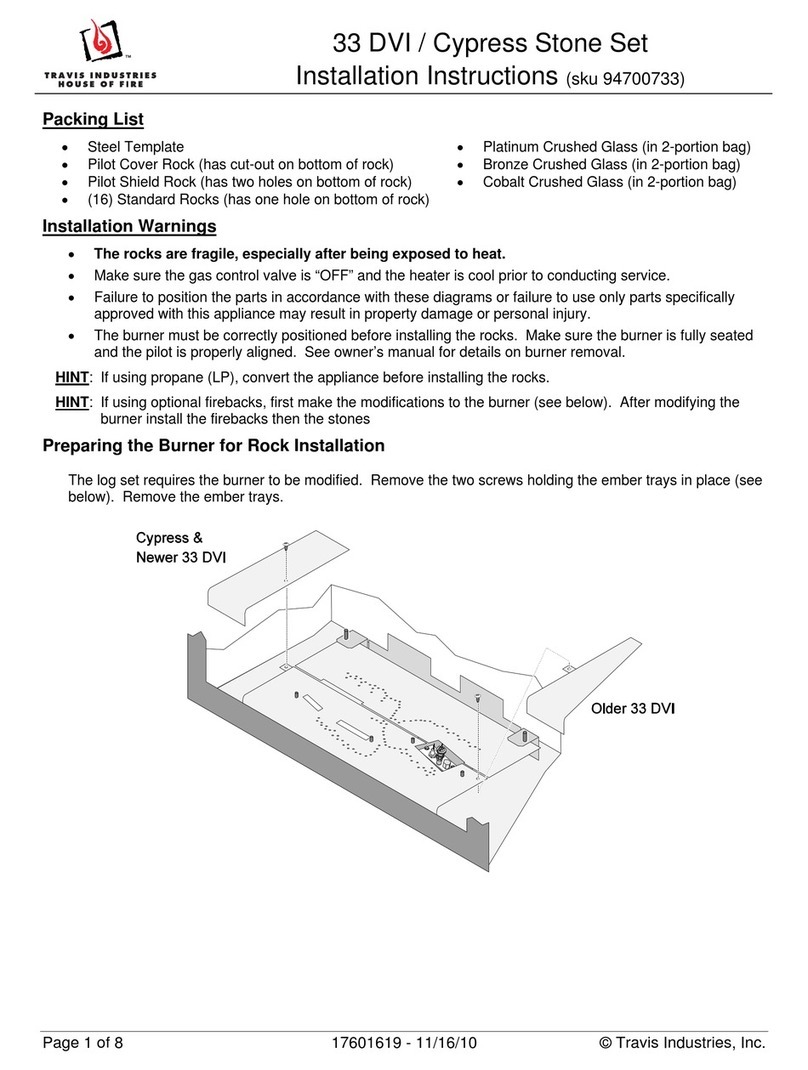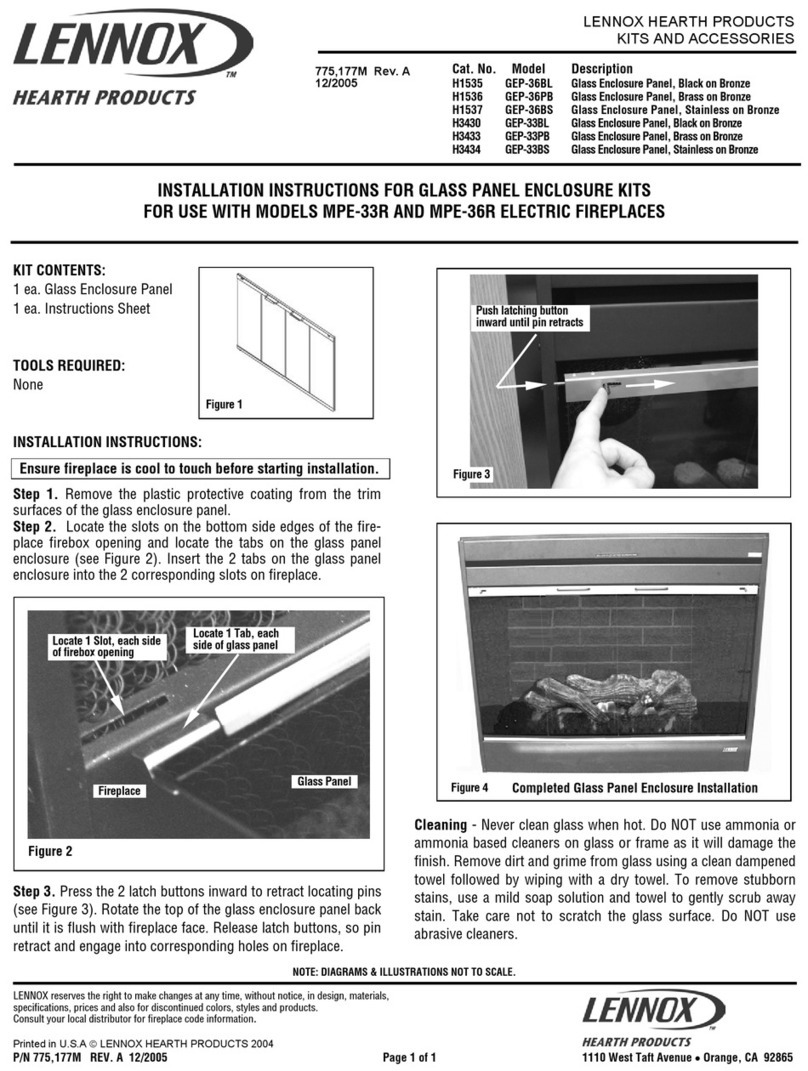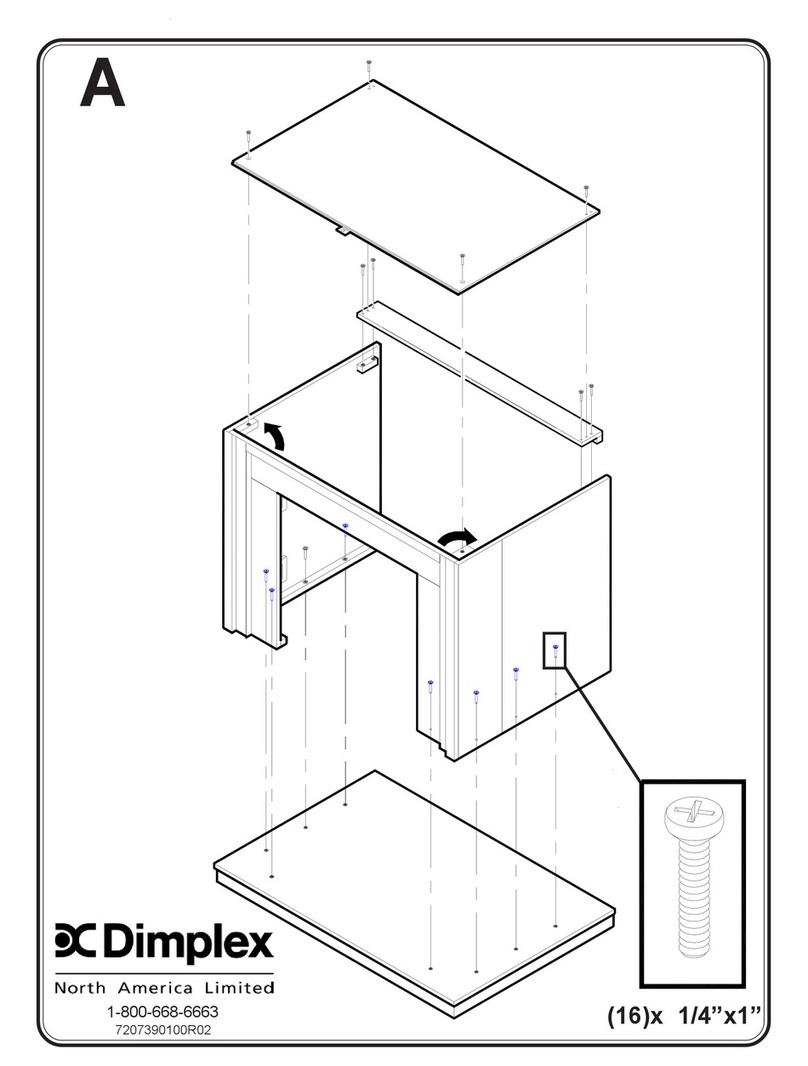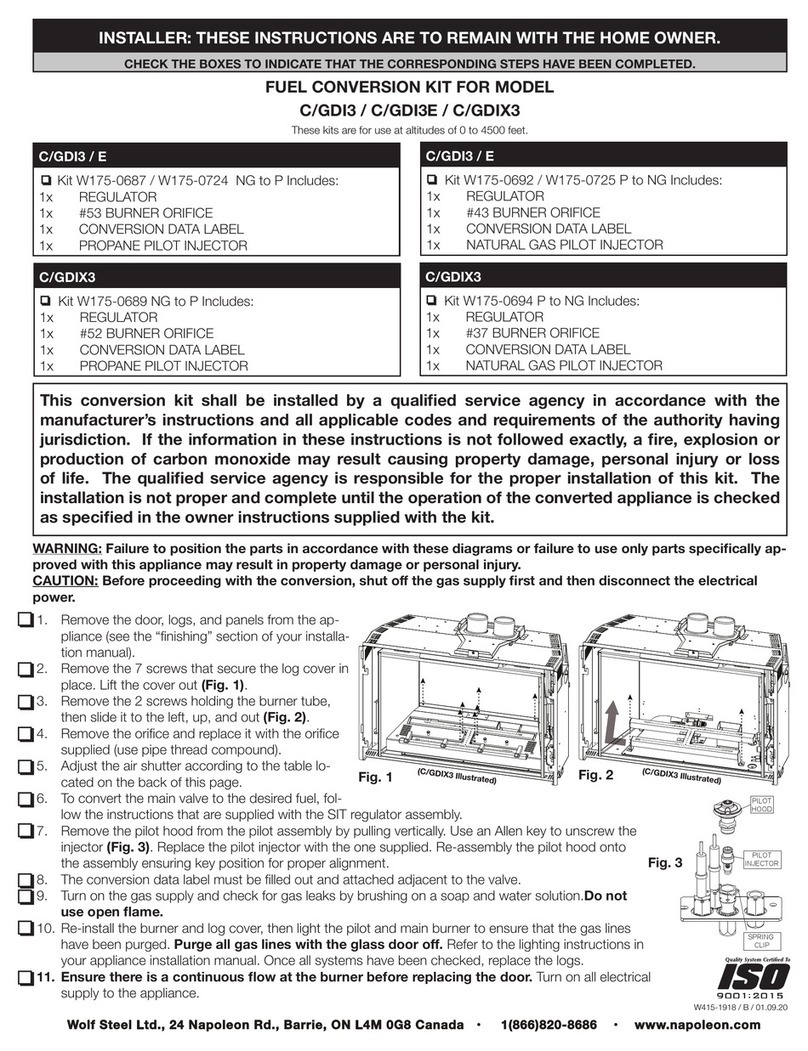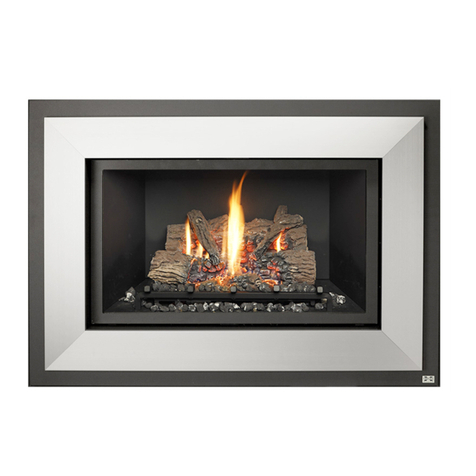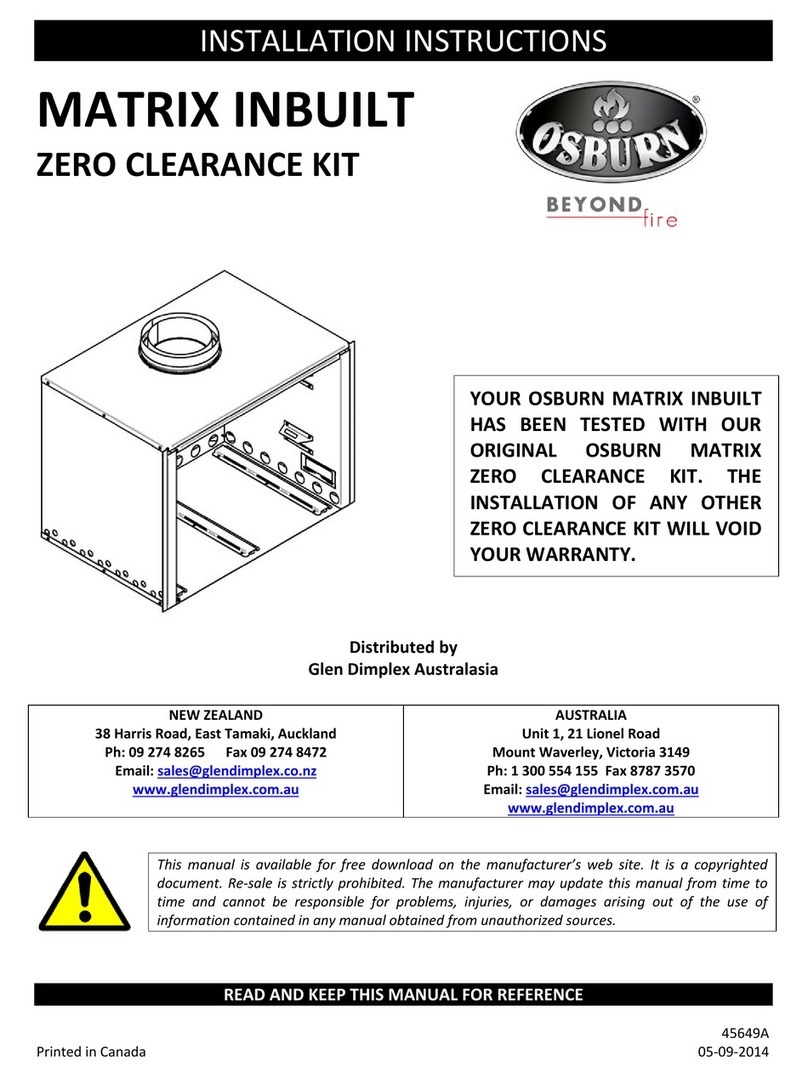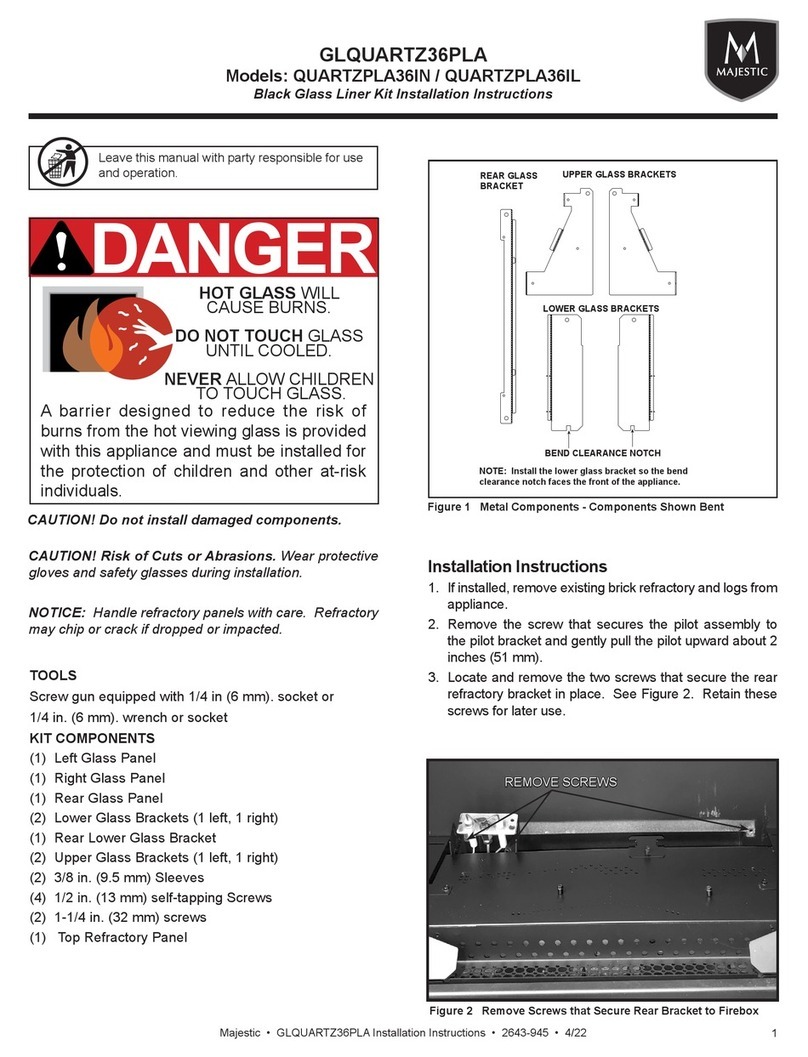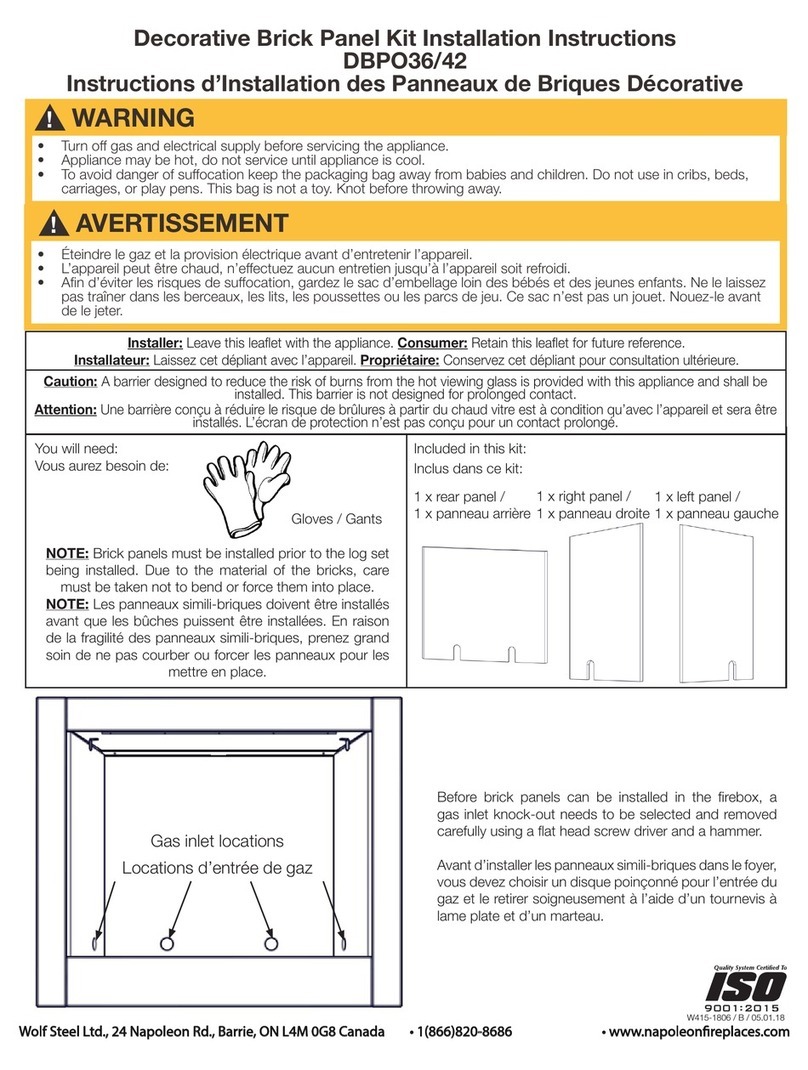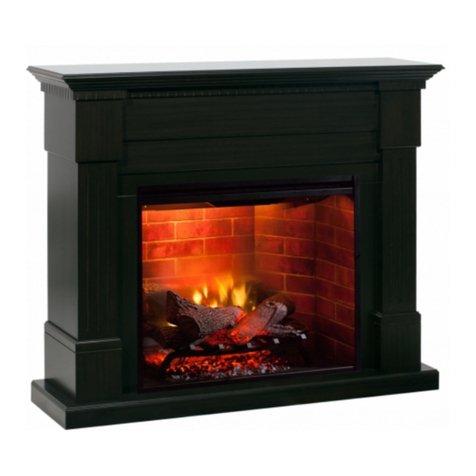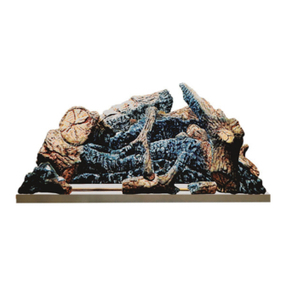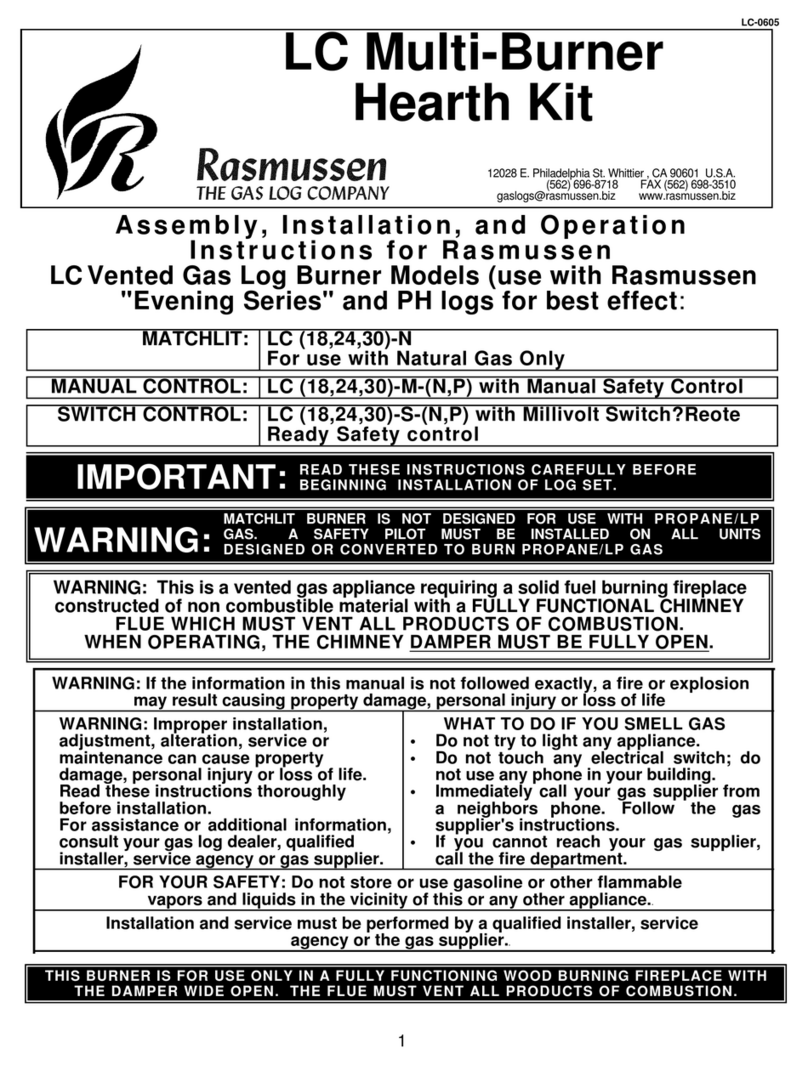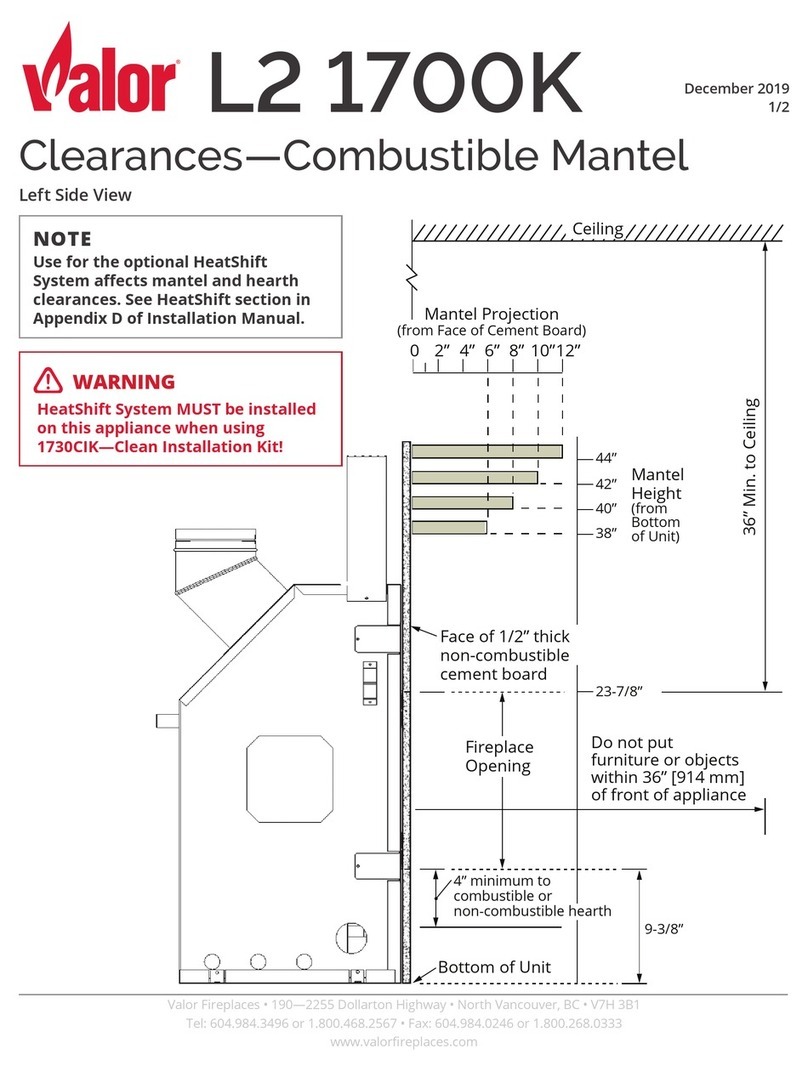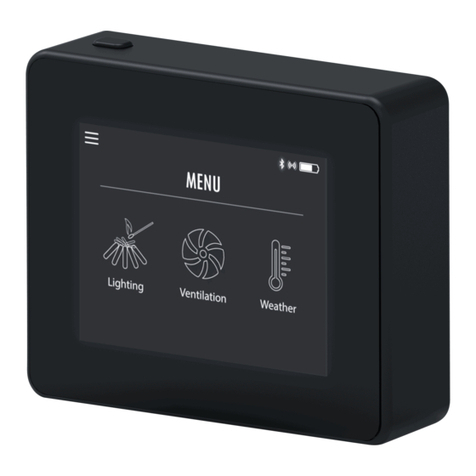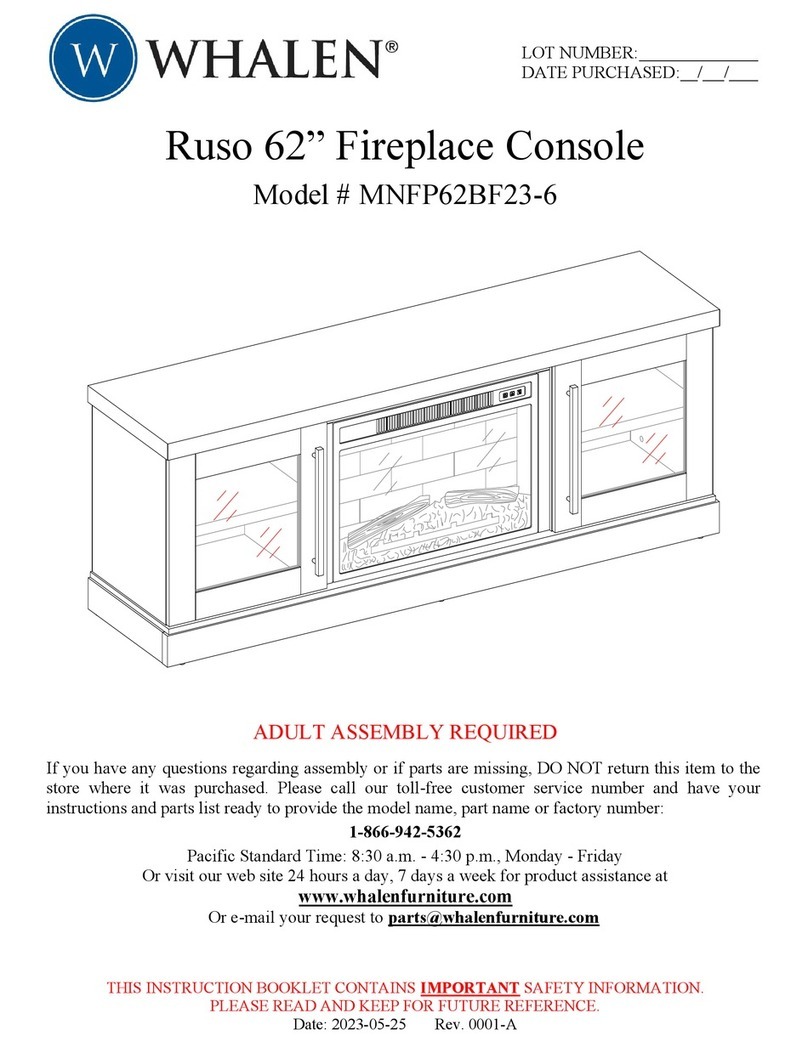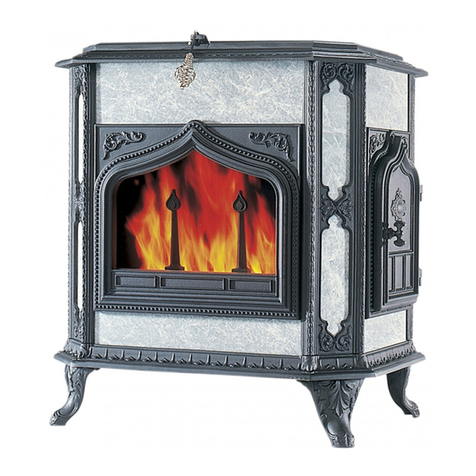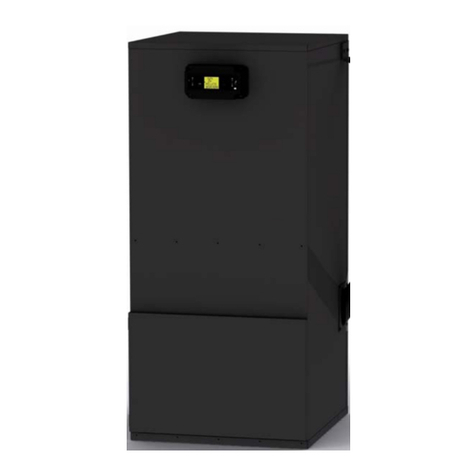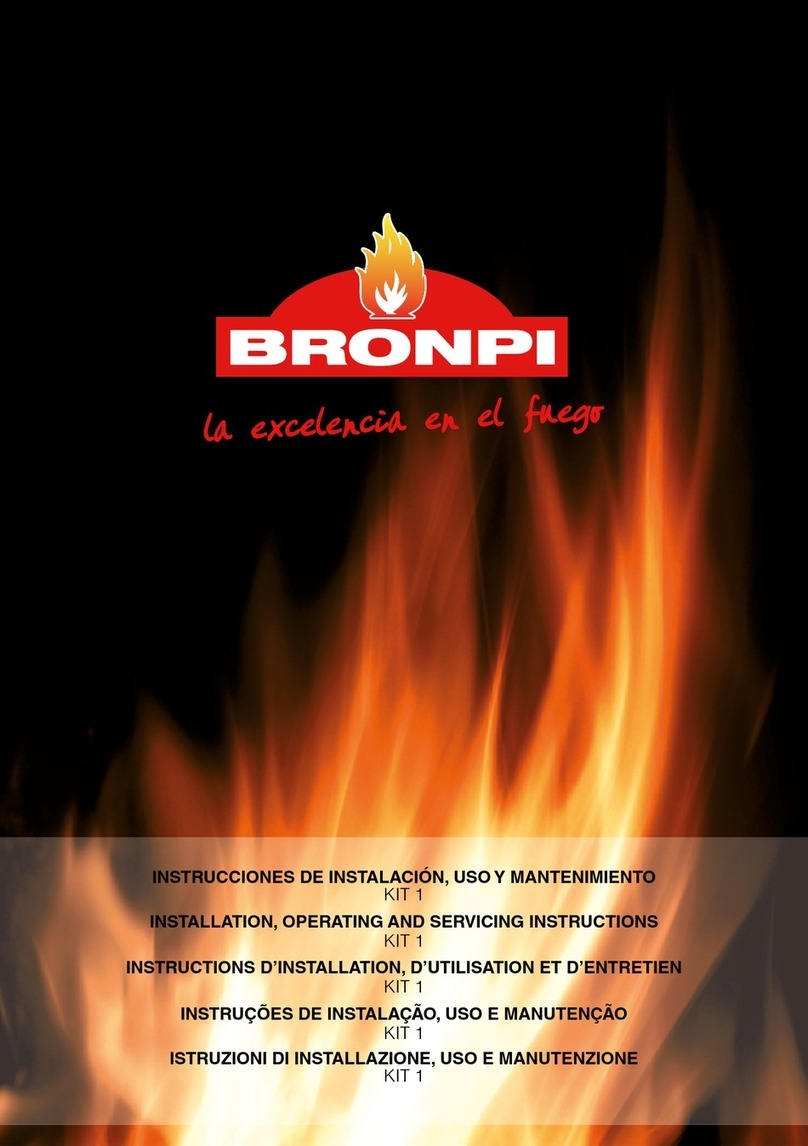
STEP SIX: Install Heat Shield.
Heat Shield
Figure 6
CAUTION! Heat Shield Must Be Installed To Prevent
Premature Valve Failure And/Or Voiding Of Valve
Manufacturer's Warranty
1. Insert the notched portion of the Heat Shield between
the Valve outlet 3/8 MIP x 3/8 FIP Elbow and the 3/8 Flared x
3/8 MIP Elbow (Figures 6 and 7). Ensure that the Heat
Shield is over the VALVE ASSEMBLY. Pilot tubing and wire
leads should be behind the shield exiting towards the rear.
VALVE
Heat
Shield
(Top
View)
Fi
ure 7
CAUTION: The safety control valve must be protected to a max ambient temperature of 175° F.
Excessive heat to the valve is indicated by melted plastic on the valve body.
STEP SEVEN: Connecting Accessory Controller:
Using the 20' accessory control wiring attached to the two outside terminals of the Valve Terminal Block (see Figures
6 and 7), connect the Switch Control Accessory Option (Remote, Thermostat, Switch, etc.) to valve.
Switch Control Accessory Options:
ULTRA-SONIC WIRELESS REMOTE (Model "F10-AB)
INFRARED WIRELESS REMOTE WITH THERMOSTAT (Model "IRRC")
WALLSWITCH (Model"WS-1")
WALL THERMOSTAT (Model "TS-1")
WALL TIMER (60 MINUTE TIMER) (Model "WT-1")
CRACKLER Sound Generator option for F10 AB or IRRC (Model "CF5")
• Accessory REMOTE LOG HOUSE (Model "RH") is available for use as a heat resistant "log" in which the receiver portion of
Wireless remote option F10 AB or IRRC may be located.
• Accessory CRACKLER LOG HOUSE (Model "CH") is available for use as a heat resistant "log" in which the CRACKLER
Sound Generator option for both the F10 AB and IRRC wireless remotes may be located.
LIGHTING
CAUTION! DAMPER AND GLASS DOORS MUST BE FULLY OPEN BEFORE LIGHTING OR BURNING FOR
PROPER VENTILATION AND TO PREVENT HEAT DAMAGE TO VALVE.
THE FLUE MUST VENT ALL PRODUCTS OF COMBUSTION.
F, FX & CS burners use Natural Gas. Fill Burner Pan with the white sand provided with burner.
FA, FA-X & CA burners use LP Gas. Fill Burner Pan with black volcanic ash provided with burner.
STEP ONE: Pilot Lighting:
NOTE: The Gas Dial has complete control of gas to pilot and burner. The Gas Dial cannot be turned to "OFF" without first
depressing dial in "PILOT" position and then rotating clockwise to "OFF". (see Figure 8)
1. Depress and turn Gas Dial to "OFF" position. (Figure 8)
2. Set Accessory Control to "OFF" (Remote Control) or to lowest temperature setting (Thermostat)
3. Wait at least 5 minutes to allow gas which may have accumulated around burner to escape.
4. Turn Gas Dial to "PILOT" position.
5. Depress and hold Gas Dial until air is
bled and gas flows to pilot.
6. Light pilot. Continue to hold in the Gas
Dial until the Pilot flame remains lit
when knob is released (approximately 60
to 90 seconds). If Pilot does not remain lit,
repeat steps1through 5and "PILOT" "ON"
PILOT
+
v
+
+
+
+
v
+
PILOT ADJUST COVER CAP
Figure 8
"OFF"
+
+
v
+
allow more time after Pilot Lighting before releasing knob.
7. Turn Gas Dial to "ON".
1/2" Figure 10
Pilot
Flame
Thermogenerator
STEP TWO: Pilot Adjustment
1. The PILOT FLAME should be steady and soft blue surrounding
approximately 1/2 inch of the thermocouple tip (see Figure 10).
2. If pilot flame adjustment is necessary, use a narrow long stem screw driver
to turn PILOT ADJUST SCREW. The PILOT ADJUST SCREW is l
ocated on the Gas Valve (see Figure 9). Turn clockwise for less flame,
counter clockwise for more flame.
3

